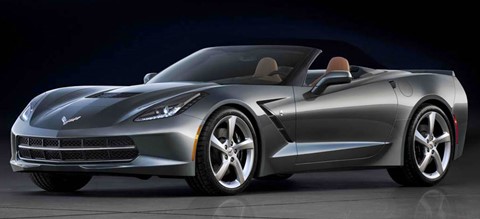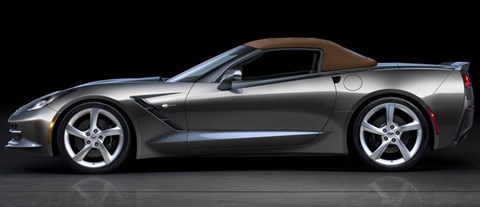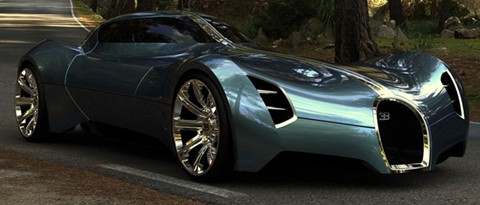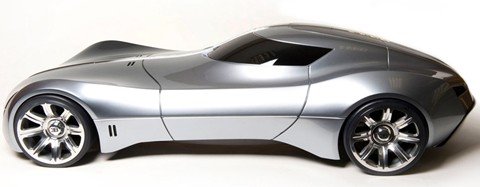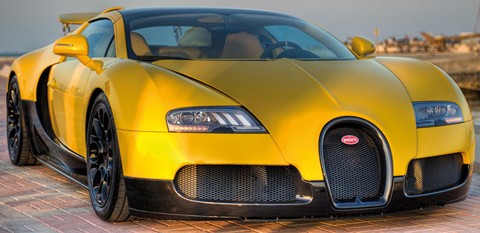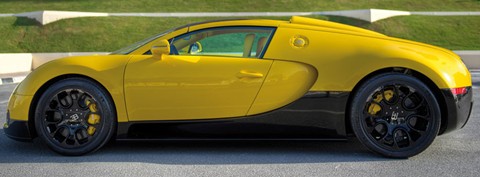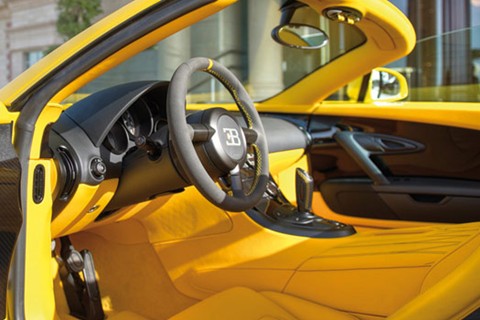
Talking about the body style first, BMW M3 Coupe is stylish car, which comes with a powerful V8 engine, which churns out 309 kW of power along with 400 Nm of torque. This is the 4th generation of the coupe which has served more above 20 years. The car accelerates with super speed and touches the highest speed in merely few seconds. On the exterior part the car is a total head tuner. The BMW M3 Coupe has a light weight body, which is also pretty stiff and has a carbon roof and lowered centre of gravity. The carbon roof is just as strong as a regular steel roof but it weighs far less.
The second body-style is the BMW M series Convertible. The car has a unique exterior, which helps it to look stunning as a star. The front as been sculpted with utmost care and concern and the tremendous power under the hood helps the car to zoom away with speed and style. The classic M grille with chrome finish further adds more charm to the car. The engine specification is similar to that of BMW M3 Coupe. This convertible has a stylish appearance and has sporty feel that would give you an awesome driving experience.
Making the portfolio stronger, BMW recently introduced its brand new sedan, BMW M5, which is an absolute stunner in its own way. The car truly justifies the luxury tag attached to it. The new BMW M5 sedan comes with M Twin Power turbo V8 petrol engine, which is sturdy and masculine. The engine produces great amount of power and torque that provides an excellent driving experience to the owner. The engine is then intelligently mated with 7 speed M dual clutch transmission with drive-logic. Taking about the style and looks of the car, the new next generation BMW M5 sedan is utterly lavish and luxurious by all means. The car has been carefully developed so that the owner could use it every day. Luxury is what is defines the best. Coming on the interiors of the sedan, the car comes with high end upholstered seats along with leather wrapped steering wheel and gear knob coated in leather too that gives a lush and plush feel to the front cabin. The interiors of the BMW M5 sedan bring to the mind a sports car at one glace. The interior designers have carefully developed the interiors and utilized the space optimally. With comfortable seating arrangement, the car also has provided ample of luxury storage space that would make it easier for the owner during long trips.
Therefore, all three BMW M series cars are tremendous and keep the ability to give a tough competition to other cars available in the market. BMW has always faced a major competition with companies like Audi, Volkswagen, Mercedes-Benz and Toyota. With the new sedan in the portfolio the competition will get more exciting and interesting.
BMW M Series Models
BMW M Series Models
| BMW M series is one of the most stylish and luxurious car in its portfolio. And the BMW M3 Coupe defines the luxury tag very nicely. The car comes with V8 engine that churns out 414 bhp of peak power accompanied with 400 Nm of peak torque that allows the car to speed up and touch its top speed in just few seconds. The exteriors are stunning and interiors have been kept comfortable and lavish. The car is spacious and seating arrangement has been done intelligently. | |
| BMW M5 sedan is absolutely premium luxury on wheels. The car is powered with V8 twin turbo petrol engine, which generates great power and torque thereby making it a smooth ride. The exteriors give feel of sports car. The elegance is still retained. Interiors have been done intelligently and provided a lot of space both for the passengers and for the luggage. |
BMW M Series Mileage
Power of BMW M Series
 BMW M3 Coupe and BMW M3 Convertible are powered with V8 high-rev engine that
is an impressive motor altogether. Each and every component has been cautiously
put together to amplify the output and engine speed; this result in producing
maximum power of 414 bhp at the rate of 8400 rpm and about 400 Nm of peak torque
at the rate of 3900 rpm. The icing on the cake is that the individual garrote
butterflies and the engine management system make sure that the engine responds
quickly to the river inputs and then translate every bit of it to the right
pedal to enlarge the acceleration. On the other hand, the BMW M5 sedan has M
Twin Power turbo V8 petrol engine installed that has the ability to churn out
680 Nm of peak torque along with 560 HP of peak power. This excellent engine
power comes from the association to the linear power curve along with intense
shove of a double turbocharger. The enhanced and improved intercoolers and the
patented TwinScroll charging concept guarantee the impulsive response
rate.
BMW M3 Coupe and BMW M3 Convertible are powered with V8 high-rev engine that
is an impressive motor altogether. Each and every component has been cautiously
put together to amplify the output and engine speed; this result in producing
maximum power of 414 bhp at the rate of 8400 rpm and about 400 Nm of peak torque
at the rate of 3900 rpm. The icing on the cake is that the individual garrote
butterflies and the engine management system make sure that the engine responds
quickly to the river inputs and then translate every bit of it to the right
pedal to enlarge the acceleration. On the other hand, the BMW M5 sedan has M
Twin Power turbo V8 petrol engine installed that has the ability to churn out
680 Nm of peak torque along with 560 HP of peak power. This excellent engine
power comes from the association to the linear power curve along with intense
shove of a double turbocharger. The enhanced and improved intercoolers and the
patented TwinScroll charging concept guarantee the impulsive response
rate.Acceleration & Pick-Up
BMW M Series Exteriors

BMW M Series looks pleasurable to watch, be it the stylish coupe, the sporty convertible or the luxurious sedan. These cars are born with that princely appearance that even the chauffer thinks twice to drive them. The BMW M3 coupe sheds power and dynamism that is filled within. The spectacular front is designed to accommodate the V8 high-rev engine in the bonnet. Four exhausts at the rear can make you shiver down the spine. The unique shape of exterior ORVMs aggravates to the overall aerodynamics. A true sports car BMW M Series coupe exteriors are marked by the signature BMW two part grille and 3 part air dam with sleek head lamps. M3 coupe looks an eye candy with its carbon-fibre sweeping back roof. The deadly wheels give the 2 door side profile a boost.
Next coming to the M3 convertible, the retractable hardtop which disappears in just 22 seconds, makes this piece of art-a wonder car. BMW M3 Convertible offers top-notch open-air driving all year round. The well spaced exteriors of M3 convertible are sculpted with the help of M gills; chrome plated steel twin exhaust pipes, side vents, air intake hole on bonnet, aerodynamic wing mirrors and rear diffuser.
Last but not the least, the BMW M5 sedan is designed perfectly and looks beauty to watch. The exclusive Monte Carlo metallic M paintwork, fit and finish are important part of any car and rivals look up to BMW M5 sedan in this field. The magnificent art work done on it is the epitome of luxury. Nothing is waste on this sedan, be it wing mirrors, M front apron, M light alloy wheels, tapered modeled front, curved M exterior mirrors, M rear spoiler and diffuser and twin tail pipes. The sedan looks simply elegant.
BMW M Series Interior

BMW focuses on performance that’s continued in the interiors of M Series too. The most important functions belong within the driver’s easy access. The cockpit ergonomics and material workmanship are subject to strict performance-orientated criteria. Each and every detail adds to the overall image of an athlete. The interior of the BMW M5 Sedan evokes a sports car in the style of an elegant sedan, with a spacious interior which first amazes then inspires. The M door sill finishers with BMW M5 logo, M fine Nappa leather steering wheel, stylish cockpit, comfortable Merino leather seats with moulded side support, stitching in M colors, aluminium shift paddles, easy gear change and optional BMW Head-up Display are some key features of this 4 seater sedan.
The M3 coupe boasts of its interiors with M circular dials, iDrive Controller, ergonomically optimised M seat with memory function, the innovative carbon structure leather trim. All these features combine to create an ambience that is designed to make drivers feel good - and inspired to take control.
Next in line is BMW M3 Convertible. The light reflects off the fine-wood interior trim with sycamore mirror-matched grain anthracite and the M steering wheel with red-blue decorative stitching. The optional trademark dual M circular dials, the M design iDrive Controller, the ergonomically optimised M seat with memory function patiently await the arrival of the driver. All these features in the BMW M3 Convertible are designed take control under the open skies.
BMW M Series Engine and Performance
 BMW M3 Convertible and BMW M3 Coupe have been powered with similar V8 petrol
engine that has been designed to deliver power packed performance. Both the
engine has been coupled with 6 speed manual transmission that ensures
pleasurable drive to the owner. The V8 engine has a displacement of 3,999cc and
has the ability to produce great amount of power that enhanced the fuel
efficiency and drivability as the engine has been coupled with seven speed M
double-clutch transmission with Drivelogic that relocates engine power of 414
bhp at 8300 rpm and about 400 Nm of peak torque at 3900 rpm to the road in
milliseconds, devoid of the slightest commotion to the force. However, the next
generation BMW M5 sedan has M Twin Power turbo V8 petrol engine, which generates
impressive amount of power-560 HP and torque-680 Nm. This engine has a
displacement of 4,395cc and ensures that the owner gets a great drive and the
car delivers a power-packed performance on the road.
BMW M3 Convertible and BMW M3 Coupe have been powered with similar V8 petrol
engine that has been designed to deliver power packed performance. Both the
engine has been coupled with 6 speed manual transmission that ensures
pleasurable drive to the owner. The V8 engine has a displacement of 3,999cc and
has the ability to produce great amount of power that enhanced the fuel
efficiency and drivability as the engine has been coupled with seven speed M
double-clutch transmission with Drivelogic that relocates engine power of 414
bhp at 8300 rpm and about 400 Nm of peak torque at 3900 rpm to the road in
milliseconds, devoid of the slightest commotion to the force. However, the next
generation BMW M5 sedan has M Twin Power turbo V8 petrol engine, which generates
impressive amount of power-560 HP and torque-680 Nm. This engine has a
displacement of 4,395cc and ensures that the owner gets a great drive and the
car delivers a power-packed performance on the road.Wheels
 The new BMW M5 sedan has beautiful wheel arches that fit in tyres that
measure around 265/40 ZR19 102Y in the front and 295/35 ZR19 104Y at the rear.
The 19 inches of alloy wheels ensure safety to the car and to the passengers and
guarantee a smooth ride on the bumpy Indian terrain too. While, on the other
side, the BMW M3 Coupe and BMW M3 Convertible sport m-light double spoke alloy
wheels, which have dimensions around 8.5Jx18/245/40 R18 on the front whereas the
rear tyres have the measurement of 9.5Jx18/265/40 R18.
The new BMW M5 sedan has beautiful wheel arches that fit in tyres that
measure around 265/40 ZR19 102Y in the front and 295/35 ZR19 104Y at the rear.
The 19 inches of alloy wheels ensure safety to the car and to the passengers and
guarantee a smooth ride on the bumpy Indian terrain too. While, on the other
side, the BMW M3 Coupe and BMW M3 Convertible sport m-light double spoke alloy
wheels, which have dimensions around 8.5Jx18/245/40 R18 on the front whereas the
rear tyres have the measurement of 9.5Jx18/265/40 R18.Braking & Handling
 Great braking and handling system is associated with BMW M
Series, so that both the passengers and the car are safe and sound in
case of any collision or accident. Starting with BMW M3 Coupe, the car comes
with responsive brakes that perform excellent during the wet-weather and prevent
the car from skidding. The cross-drilled brake disc and a bit use of aluminum
make the brakes more enhanced. The BMW M3 Coupe has high performance braking
system that is impressive in all ways. The M Drive manager present here allows
the coupe’s function to be customized. The functions comprise of Dynamic
Stability control, Digital Motor Electronics system, Servotronic Steering, and
electronic damper control. to activate the safe driving, all one needs to do is
to press a button on the steering wheel. Further the coupe comes with anti-lock
braking system along with airbags for the driver and for the co-passenger. The
BMW M3 Convertible has similar braking and handling system that makes the car
technically safe and secure. The BMW M5 sedan is no less in the safety
department. The car comes with powerful disc brake along with M Drive manager
that has all possible high-tech braking and handling system. The presence of ABS
with EBD acts as cherry on top.
Great braking and handling system is associated with BMW M
Series, so that both the passengers and the car are safe and sound in
case of any collision or accident. Starting with BMW M3 Coupe, the car comes
with responsive brakes that perform excellent during the wet-weather and prevent
the car from skidding. The cross-drilled brake disc and a bit use of aluminum
make the brakes more enhanced. The BMW M3 Coupe has high performance braking
system that is impressive in all ways. The M Drive manager present here allows
the coupe’s function to be customized. The functions comprise of Dynamic
Stability control, Digital Motor Electronics system, Servotronic Steering, and
electronic damper control. to activate the safe driving, all one needs to do is
to press a button on the steering wheel. Further the coupe comes with anti-lock
braking system along with airbags for the driver and for the co-passenger. The
BMW M3 Convertible has similar braking and handling system that makes the car
technically safe and secure. The BMW M5 sedan is no less in the safety
department. The car comes with powerful disc brake along with M Drive manager
that has all possible high-tech braking and handling system. The presence of ABS
with EBD acts as cherry on top.Handling & Safety
Stereo & Accessories in BMW M Series
 The high performance and incredible audio/MP3 player adds on more charm to
the BMW M series cars. The audio player has USB support
interface that allows the person to attach a USB or an iPod easily and without
any trouble. The sound clarity is pretty impressive and the speakers have been
placed evenly so that all the passengers can hear the music with pleasure and
enjoyment. The BMW M3 coupe comes with some impressive accessories, such as BMW
Assist that put you in incharge of your voyage plans. The major highlights of
BMW Assist comprise of congestion reports, up-to-date traffic info, substitute
route suggestions, and other important address regarding restaurants etc. All
this can be entered the navigation system without any hassle and the automatic
emergency call feature along with the breakdown assistance request improves the
safety further. On the other hand, BMW Convertible gets optional leather seats
with the modern sun reflective technology that make sure comfortably cool seats
even in hot and humid summers, whereas the M embossment on the headrests further
adds more charm to interiors altogether. The next generation BMW M5 sedan comes
with M Drive mode that comprise of two profiles, which could be selected using M
Buttons. The M instrumental panel shows up all the important data. The optional
BMW Head-Up display provides the driver with all important info regarding gear,
optimal moment to change gear, speed limit etc.
The high performance and incredible audio/MP3 player adds on more charm to
the BMW M series cars. The audio player has USB support
interface that allows the person to attach a USB or an iPod easily and without
any trouble. The sound clarity is pretty impressive and the speakers have been
placed evenly so that all the passengers can hear the music with pleasure and
enjoyment. The BMW M3 coupe comes with some impressive accessories, such as BMW
Assist that put you in incharge of your voyage plans. The major highlights of
BMW Assist comprise of congestion reports, up-to-date traffic info, substitute
route suggestions, and other important address regarding restaurants etc. All
this can be entered the navigation system without any hassle and the automatic
emergency call feature along with the breakdown assistance request improves the
safety further. On the other hand, BMW Convertible gets optional leather seats
with the modern sun reflective technology that make sure comfortably cool seats
even in hot and humid summers, whereas the M embossment on the headrests further
adds more charm to interiors altogether. The next generation BMW M5 sedan comes
with M Drive mode that comprise of two profiles, which could be selected using M
Buttons. The M instrumental panel shows up all the important data. The optional
BMW Head-Up display provides the driver with all important info regarding gear,
optimal moment to change gear, speed limit etc.You can now buy . Great discounts available.
BMW M Series Specifications
| Variants | Transmission | Engine Description | Mileage | Power | AC | Power Steering | Central Locking | |
| City | Highway | |||||||
| (Petrol) | Automatic | 3999cc 8 Cylinder 32 Valve |
4.45 | 8.93 | 420bhp @ 8300rpm | Standard | Standard | Standard |
| (Petrol) | Automatic | 3999cc 8 Cylinder 32 Valve |
5.45 | 8.93 | 420bhp @ 8300rpm | Standard | Standard | Standard |
| (Petrol) | Automatic | 4395cc 8 Cylinder 32 Valve |
3.4 | 6.8 | 560bhp @ 6000-7000rpm | Standard | Standard | Standard |
























